| Gemstone Chart |
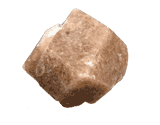 Natural Grossularite Natural Grossularite
A member of the garnet group, grossularite is found in a variety of colors including, yellow, brown, white, colorless, green, violet-red, and orangey red.
Color: Brown, yellow, green
Categories: semi-precious stone
Chemical Composition: Ca3Al2(SiO4)3
Crystal Group: Cubic
Refractive Index: 1.72-1.748
Hardness: 7.25
Density: 3.65
Occurrence: Canada, East Africa, Pakistan, New Zealand, Ceylon, South Africa, U.S.A.
| 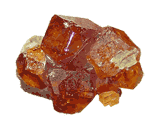 Natural Hessonite Natural Hessonite
Hessonite is one of the gem varieties of the garnet mineral, grossular. Hessonite is usually cinnamon brown and has been called "cinnamon stone". Hessonite can also be orange; this color is becoming common on the gem markets.
Color: Brownish-orange, brownish yellow, aurora red
Categories: semi-precious stone
Chemical Composition: Ca3Al2(SIO4)3
Crystal Group: Cubic
Refractive Index: 1.72-1.74
Hardness: 7.25
Density: 3.65
Occurrence: Sri Lanka, Mexico, Brazil, Canada, Madagascar
| 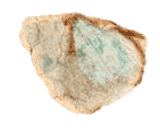 Natural Jadeite Natural Jadeite
A rare, usually green mineral of the pyroxene group. Jadeite can also occur in white, auburn, buff, or violet varieties. The most highly valued form of jade consists of jadeite.Jade has a history in China of at least four thousands years.Experts believe that, although more expensive, diamonds and gold cannot be compared with jade - jade is animated with a soul.
Color: Pure white thru pink, brown, red, orange, yellow, mauve, violet, blue, and black, to an extensive range of green and mottled green and white.
Categories: semi-precious stone
Chemical Composition: NaAl(SiO3)2
Crystal Group: Monoclinic
Refractive Index: 1.654 - 1.667
Hardness: 7
Density: 3.32
Occurrence: Northern Myanmar. Non commercial discoveries of Jadeite have also been reported in China; Russia (in the Polar Urals); Niigata, Japan; San Benito County, California, USA, and Guatemala.
| 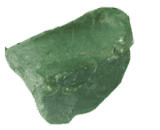 Natural Kornerupine Natural Kornerupine
Kornerupine is a rare mineral occasionally used as a gemstone. It appears frequently in parcels from Ceylon and may be confused with beryl, peridot, topaz, or quartz.
Color: Brown, brownish red, yellow-green, light green, blue green
Categories: semi-precious stone
Crystal Group: Orthorhombic
Refractive Index: 1.665 – 1.683
Hardness: 6.5
Density: 3.25 - 3.35
Occurrence: Ceylon, Tanzania
| 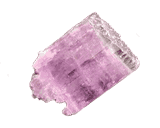 Natural Kunzite Natural Kunzite
Kunzite is the pink to light purple gem variety of the mineral Spodumene.Although kunzite is a relatively soft and delicate gem, and can fade after prolonged exposure to light, its appealing color makes it a popular gem. Small gems are seldom cut from kunzite because of its cleavage and strong pleochroism. It is rarely seen in rings, necklaces, or any other forms of jewelry where small stones are required.
Color: Pink, Lilac, Light Violet
Categories: semi-precious stone
Chemical Composition: LiAlSi2O6
Crystal Group: Monoclinic
Refractive Index: 1.660 - 1.675
Hardness: 7
Density: 3.17 - 3.19
Occurrence: Africa, Brazil, Canada, Madagascar, Mexico, Myanmar, Afghanistan, Sweden, and USA (California).
| 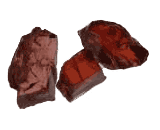 Natural Malaia Garnet Natural Malaia Garnet
Malaia garnet is a mixture of almandine, pyrope, and spessartine. It has remained the preserve of collectors for the 2 decades since it was discovered, mainly due to its extreme rarity.Tanzania is the known source for this lovely gemstone.
Color: orangey pink, champagne, orange brown, copper-pink.
Categories: semi-precious stone
Chemical Composition: [Mg3 + Mn3]AL2(SIO4)
Crystal Group: Cubic
Refractive Index: 1.73 - 1.81
Hardness: 7 - 7.5
Density: 3.65 - 4.20
Occurrence: Kenya, Tanzania, Madagascar
| 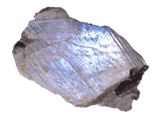 Natural Moonstone Natural Moonstone
The most common moonstone is of the mineral adularia.It is an opaque stone, a simi-clear white, kind of the color of watered down milk.Moonstone Jewellery uses the gemstone moonstone as its main stone.
Color: white, blueish white.
Categories: semi-precious stone
Chemical Composition: KalSI3O8
Crystal Group: Monoclinic
Refractive Index: 1.518 – 1.526
Hardness: 6 – 6.50
Density: 2.55 – 2.57
Occurrence: Sri Lanka, India, Madagascar, Burma, Tanzania, U.S.A.
| 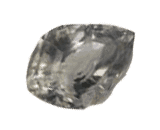 Natural Musgravite Natural Musgravite
Musgravite is an extremely rare member of the taaffeite family that was discovered in 1967 in the Musgrave Range of South Australia. It is also one of rare gemstones that have been sought these years for the collection at GAAJ laboratory.
Color: pale olive green, grey, mauve, grey purple
Categories: semi-precious stone
Chemical Composition: (Fe2+,Zn,Mg)2Al6BeO12
Crystal Group: Hexagonal
Refractive Index: 1.717 - 1.739
Density: 3.68
Occurrence: The Musgrave Mountain Ranges in Central Australia
|
|
